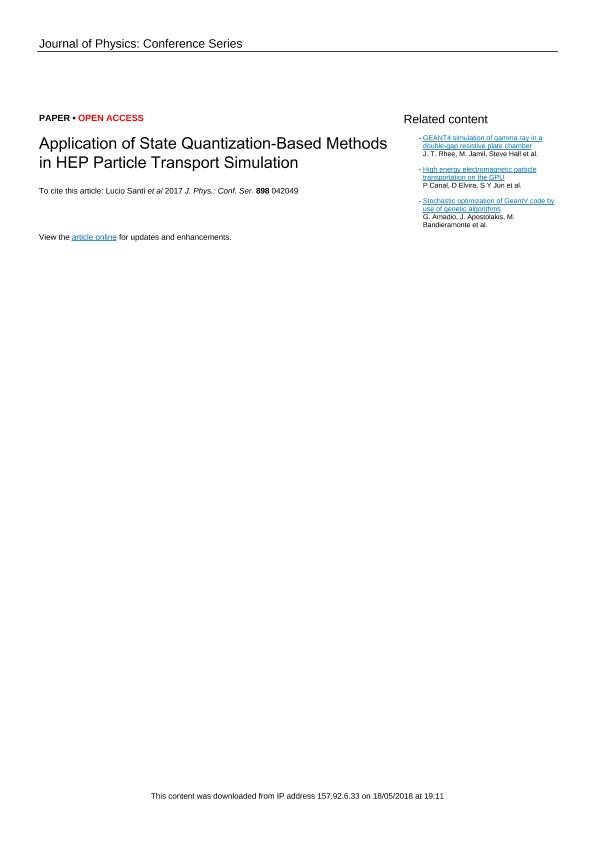Artículo
Application of State Quantization-Based Methods in HEP Particle Transport Simulation
Santi, Lucio Emilio; Ponieman, Nicolás; Jun, Soon Yung; Genser, Krzysztof; Elvira, Daniel; Castro, Rodrigo Daniel

Fecha de publicación:
11/2017
Editorial:
Institute of Physics Publishing
Revista:
Journal of Physics: Conference Series
ISSN:
1742-6596
Idioma:
Inglés
Tipo de recurso:
Artículo publicado
Clasificación temática:
Resumen
Simulation of particle-matter interactions in complex geometries is one of the main tasks in high energy physics (HEP) research. An essential aspect of it is an accurate and efficient particle transportation in a non-uniform magnetic field, which includes the handling of volume crossings within a predefined 3D geometry. Quantized State Systems (QSS) is a family of numerical methods that provides attractive features for particle transportation processes, such as dense output (sequences of polynomial segments changing only according to accuracy-driven discrete events) and lightweight detection and handling of volume crossings (based on simple root-finding of polynomial functions). In this work we present a proof-of-concept performance comparison between a QSS-based standalone numerical solver and an application based on the Geant4 simulation toolkit, with its default Runge-Kutta based adaptive step method. In a case study with a charged particle circulating in a vacuum (with interactions with matter turned off), in a uniform magnetic field, and crossing up to 200 volume boundaries twice per turn, simulation results showed speedups of up to 6 times in favor of QSS while it being 10 times slower in the case with zero volume boundaries.
Palabras clave:
Simulation
,
Qss
,
Devs
,
Hep
Archivos asociados
Licencia
Identificadores
Colecciones
Articulos(OCA CIUDAD UNIVERSITARIA)
Articulos de OFICINA DE COORDINACION ADMINISTRATIVA CIUDAD UNIVERSITARIA
Articulos de OFICINA DE COORDINACION ADMINISTRATIVA CIUDAD UNIVERSITARIA
Citación
Santi, Lucio Emilio; Ponieman, Nicolás; Jun, Soon Yung; Genser, Krzysztof; Elvira, Daniel; et al.; Application of State Quantization-Based Methods in HEP Particle Transport Simulation; Institute of Physics Publishing; Journal of Physics: Conference Series; 898; 4; 11-2017; 42-49
Compartir
Altmétricas



